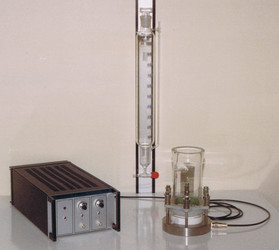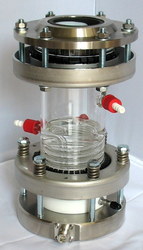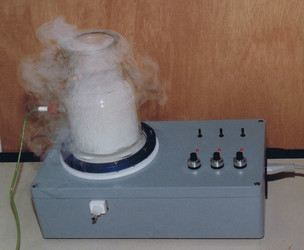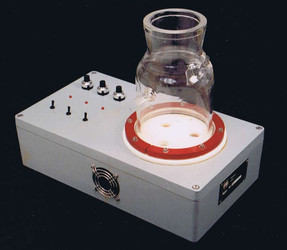Ultrasonic Aerosol Generators
Our aerosol generators are based on the Pyrosol technique, which has been developed and patented by the CEA.
This is based on the transport and subsequent pyrolysis of a spray generated by an ultrasonic atomizer: when a high-frequency (100kHz-10MHz range) ultrasonic beam is directed at a gas-liquid interface, a geyser forms at the surface — the height of the geyser being proportional to the acoustic intensity and to some physical properties of the liquid (vapour pressure, viscosity and surface tension). The droplet sizes in this aerosol are uniform, depending on liquid characteristics and ultrasound frequency.
Applications
-
Medical — an effective way to deliver medication via the lungs.
-
Industrial — when a product can be prepared in liquid form production of aerosol is a useful way to divide a product into very small fractions of uniform size. Our aerosol generators are used in many applications, among which:
- thin layer deposits (optics and micro electronics);
- thin powder production (chemistry);
- chemical reactions between liquid and gas.
-
Research laboratories — such aerosols may be used as tracers in turbulent diffusion simulations.
Products
RBI produces two types of aerosol generators. They consist in:
- a special jar, hosing the transducer(s), in which the aerosol takes form;
- a constant level vessel supplying the jar with the liquid;
- an electronic circuit for transducer excitation.
PYROSOL 7901


- 1 transducer (⌀ 38 mm)
- resonant frequency: ≃ 0.8 MHz
- flow: 0 to 250 cm³/h (with water)
- droplet diameter: ≃ 8 µm
GAPUSOL 9001


- 3 transducers (⌀ 20 mm)
- resonant frequency: ≃ 2.5 MHz
- flow: 0 to 450 cm³/h (in water)
- droplet diameter: ≃ 2 µm
This equipment is compatible with most solvents used in thin layer processes.